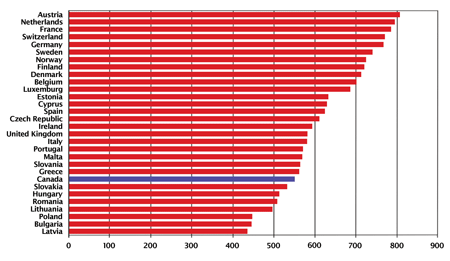By Johan Hjertqvist
Johan Hjertqvist, founder and President of the Health Consumer Powerhouse, presents 2008 data from European consumer surveys that, for the first time, included Canada. —Report from a presentation at the 2008 conference of the MUHC-ISAI
The Health Consumer Index was designed to measure the gap between what consumers expect and what health care systems deliver in various countries.
We look at 27 indicators in five categories: patient rights, accessibility, medical outcomes for a basket of treatments, access to medicines and the generosity of the system, i.e. how much care is publicly covered?
How does Canada rate?
Compared to European countries, Canada rates very poorly on most indices, and ranks between Greece and Slovakia in total score (Figures 1). The three factors that contribute most to Canada’s poor standing are waiting times, poor coverage for medicines, and the absence of a culture of patient rights.
Outcomes from cardiac care are excellent compared to other countries, while other treatments produce average outcomes. Access to cataract surgery is good but waiting times are very long for other procedures. The Canadian system is not very generous in terms of what is covered by the public purse: roughly one third of funding comes from individuals, compared to only around 10% in European countries. This is especially true with medicines: less than 40% of the cost of medications in Canada is covered by public funding and there is rather poor access to new drugs, with long delays in introducing new drugs into reimbursement systems.






